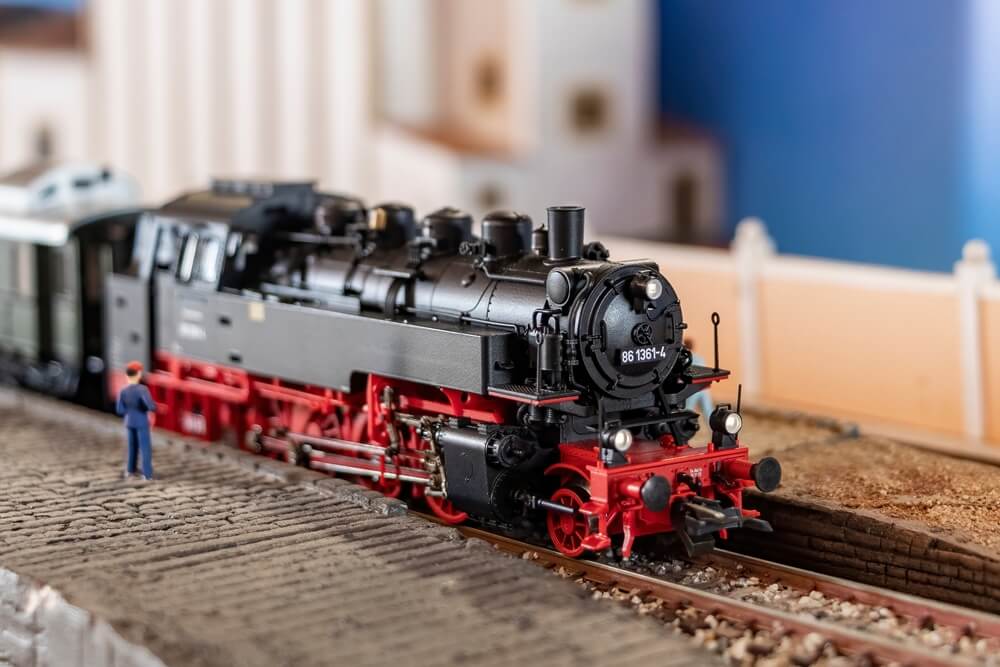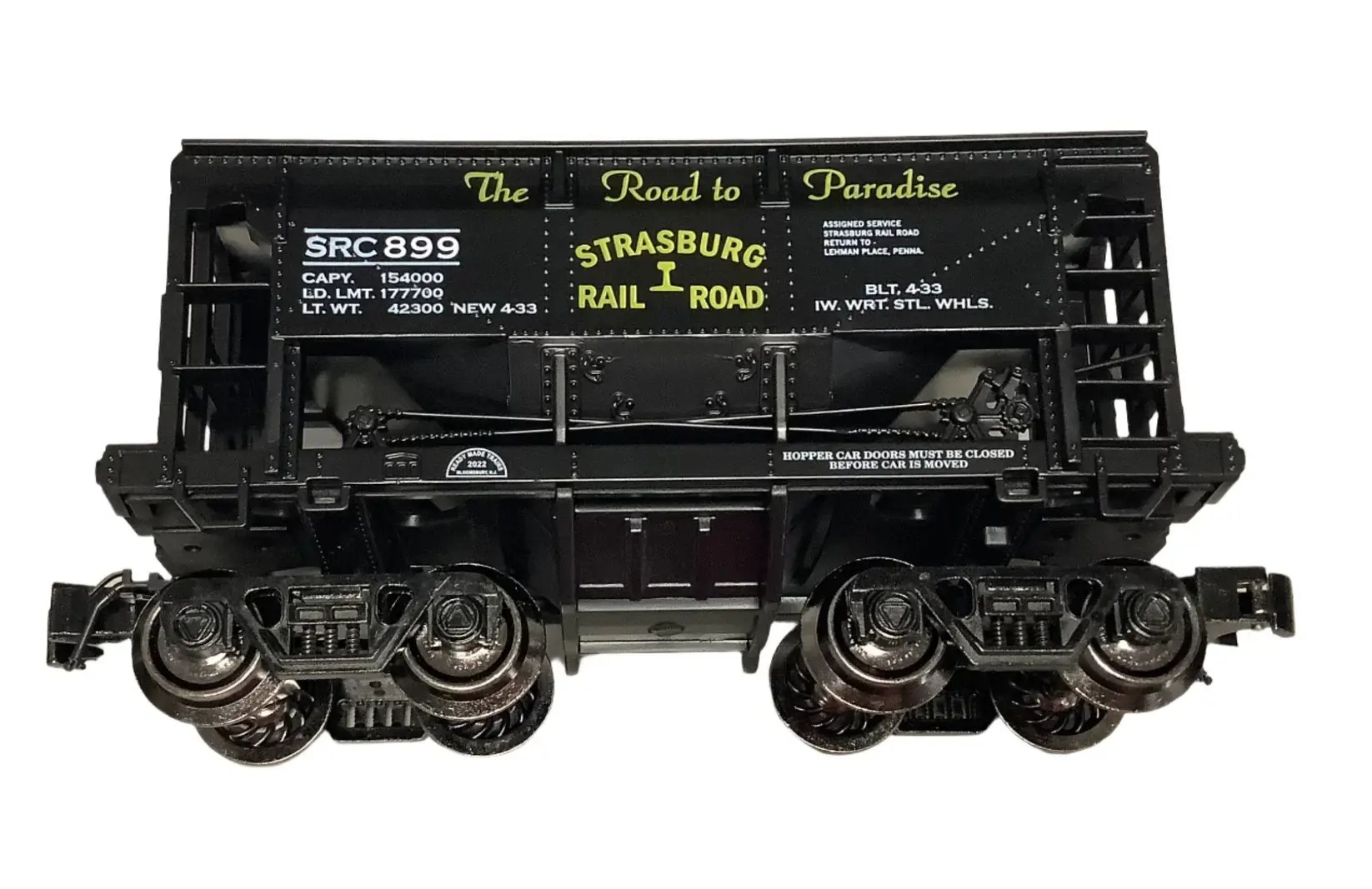UNDERSTANDING MODEL TRAIN SCALES

What’s the difference between toy trains and model trains? Model trains are built to scale; essentially, they’re miniature versions of life-size locomotives that have been proportionally shrunk.
If you’re new to model training, understanding model train scales and their track compatibilities can seem intimidating. But with our help, we’ll help narrow down which model train scale is best for you based on your interests, size restraints, and general popularity.
Gauge vs. Scale
Like any hobby, it’s important to understand the foundations and some of the terminology associated with model trains before you jump in and invest in your own. The terms “scale” and “gauge” are two common terms you’ll need to know, and they’ll work hand-in-hand when you build your layout.
The train scale is the ratio or percentage used to measure the model train to its prototype (aka, the life-sized locomotive it’s modeled after). The gauge is the distance between the rails that the train will run along, and it determines which model trains can run on the track.
The scale and gauge must be compatible to build a functional model train layout. If the train’s wheels can’t engage with the tracks properly because the scale and gauge are at odds, there’s a higher chance of derailments or damage to your machinery.
The Model Train Scales
Let’s jump into the different model train scales you can buy, starting with the most popular and ending with the rarest.
HO Scale (1:87)
The HO scale is probably the most popular train model in North America. The scale is 1:87 —about half the size of the O scale — and it runs on a gauge of 16.5 millimeters.
They are the most popular model train scales because they are the easiest to find. Between rolling stock, locomotives, and buildings, the HO scale has the largest variety of model trains to choose from to grow your collection.
We recommend size HO trains as one of the best model train scales for beginners because of (1) their enormous selection of models and accessories, and (2) their size. They’re small enough to create a full layout where space might be limited, yet they still have a good balance of detail that most hobbyists appreciate.
N Scale (1:160)
The N scale, which is roughly half the size of HO scale models, chugs closely behind in both popularity and size. This scale is 1:160 and runs on a 9 millimeter gauge. The “N” classification is short for “nine,” referring to the track gauge.
Because of their size, these model trains are better suited for adult hobbyists than children. Like the HO scale, their size allows them to be used in smaller spaces, but don’t let that keep you from exploring N-scale model train layouts. You can still build elaborate, realistic scenes using the N scale because there’s an extensive selection of train models and accessories.
N scales and HO scales are similar in many ways, but N scale models can’t be modified as easily as HO trains. If you’re content with your model trains as is and don’t plan on making any customizations, N scales can be a great option for collectors.
O Scale (1:48)
The O scale is one of the oldest model train scales, first introduced in Germany and later used in the US to mass produce toy and model trains. This train scale is on the larger side at 1:48, and generally runs on a gauge of 1.25 inches.
We say “generally” because O scale model train layouts are unique; 1.25 inches is considered the standard track gauge, but O models can also run on a narrow gauge of 16.5 millimeters (the same as the HO gauge).
This versatility is what makes O scale model trains popular among modelers and a great starting point for beginners. Next time you’re at Strasburg Rail Road, visit our general merchandise store to explore our collection of trains, or order yours today on our online store!
G Scale (1:20.3 – 1:32)
The G Scale, which stands for “garden” scale, is a catch-all categorization for any model railroad layout larger than the O scale. In the US, that’s usually 1:22.5. Regardless of the ratio, most models run together on a 1.75-inch gauge track.
As the largest train models, G scales require lots of space to build a detailed layout. It’s not uncommon for these layouts to be built outdoors — they’re dubbed the “garden” scale after all!
Their large size makes them durable and rugged, which makes them a cost-efficient model train scale for younger children.

S Scale (1:64)
S scale model trains sit in size between HO and O scale trains. They are built to a 1:64 scale and operate on a .875-inch track gauge. These trains peaked in the 1950s; they were larger than HO scales, which meant greater reliability, but smaller than O scales, which meant that train layouts needed less space.
Today, S scale trains are considered “higher-end” models because they are intricate, resembling their life-size prototypes in accurate detail. Plus, they aren’t widely available like other scales, which only reinforces their status.
Z Scale (1:220)
The smallest model train scales readily and commercially sold are Z scales, which are 1:220 times smaller than their prototypes and run on a 6.55mm gauge. These train models are so small that a full miniature city can be built inside a suitcase!
Aside from size, these layouts are rare because the availability of rolling stock and other accessories is extremely limited. But they’re loved by enthusiasts with an eye for detail. For how compact these layouts can be, there’s a surprising balance between Z model train sizes and detail.
Model Train Scales Chart
Use this chart as your quick reference guide to the 6 common model train scales and their gauges:
| Scale | Gauge | |
| Z Scale | 1:220 | 6.55 mm |
| N Scale | 1:160 | 9 mm |
| HO Scale | 1:87.1 | 16.5 mm |
| S Scale | 1:64 | .875 inches |
| O Scale | 1:48 | 1.25 inches |
| G Scale | 1:22.5 | 1.75 inches |
If you have more questions about getting started or need some inspiration for building track layouts, the Train Collectors Association™ is a great resource!
Come see some historic, life-sized locomotives in action at the Strasburg Rail Road!


 Enjoy a memorable 30-minute steam train ride behind the famous Thomas the Tank Engine during Thomas’s Anniversary year! Your ticket includes all Day Out With Thomas event activities.
Enjoy a memorable 30-minute steam train ride behind the famous Thomas the Tank Engine during Thomas’s Anniversary year! Your ticket includes all Day Out With Thomas event activities.